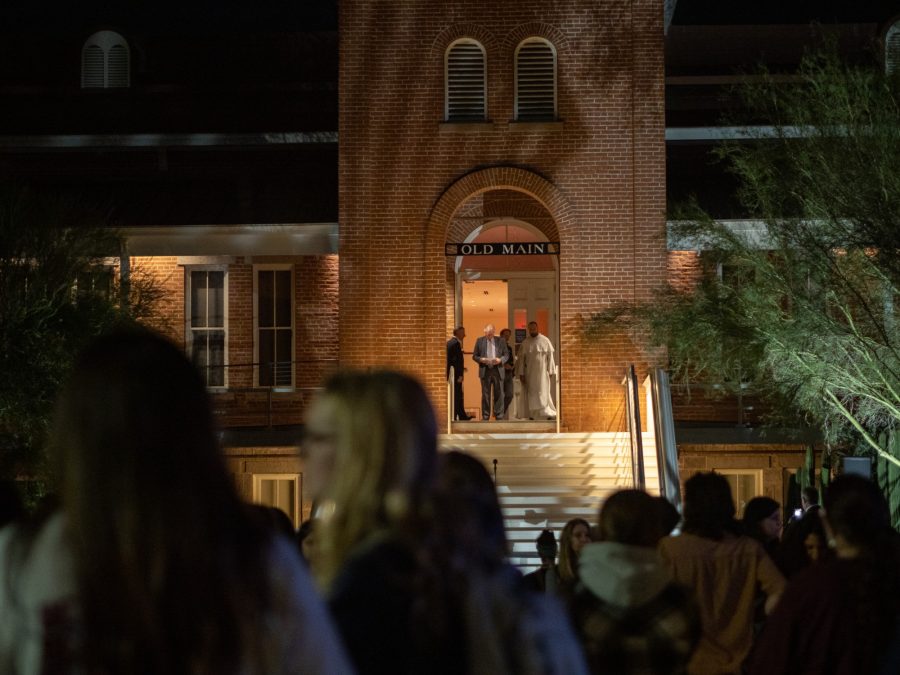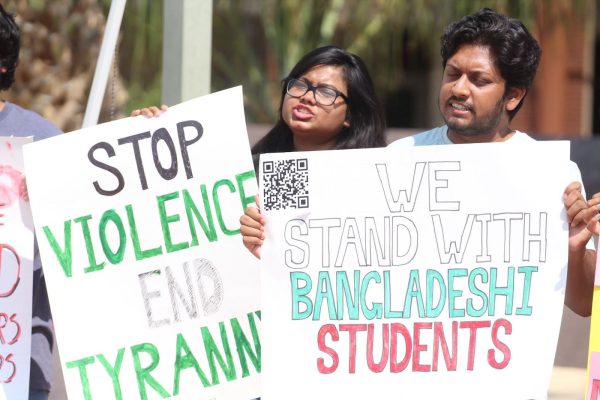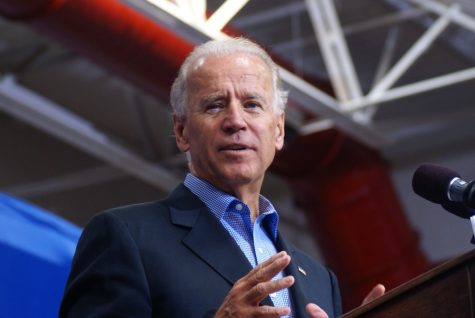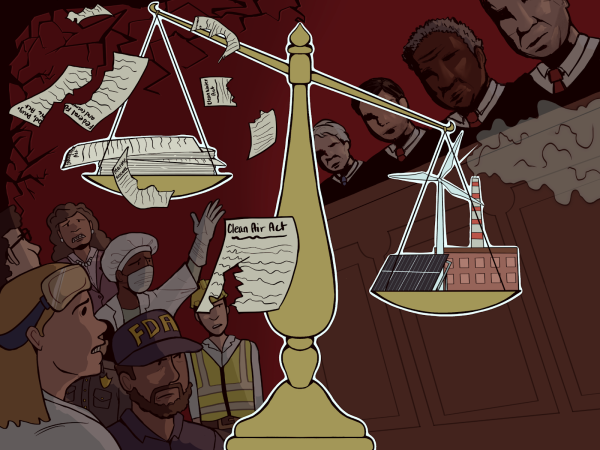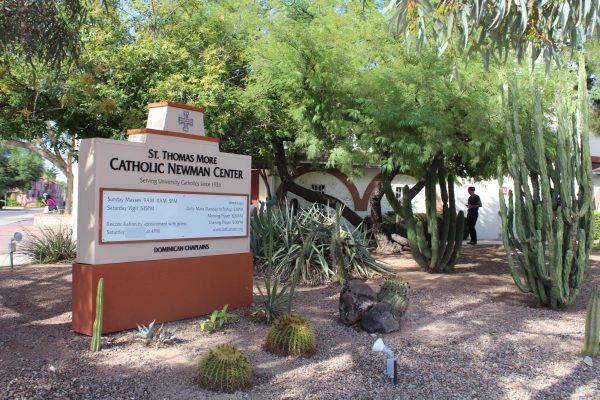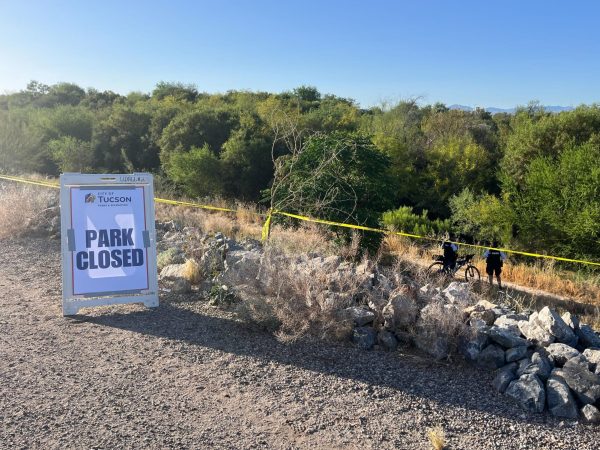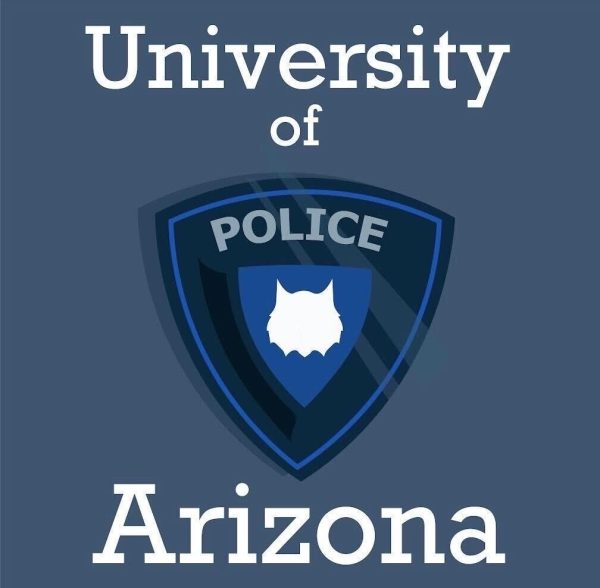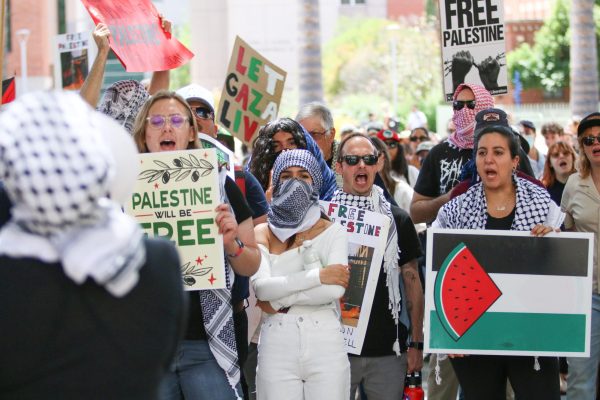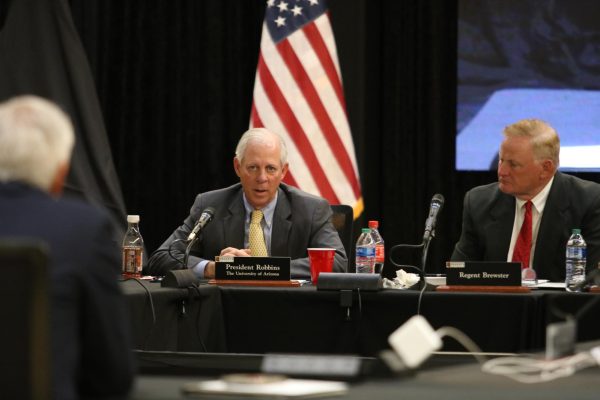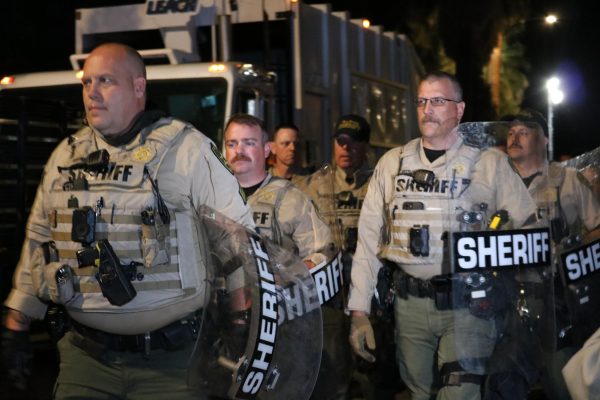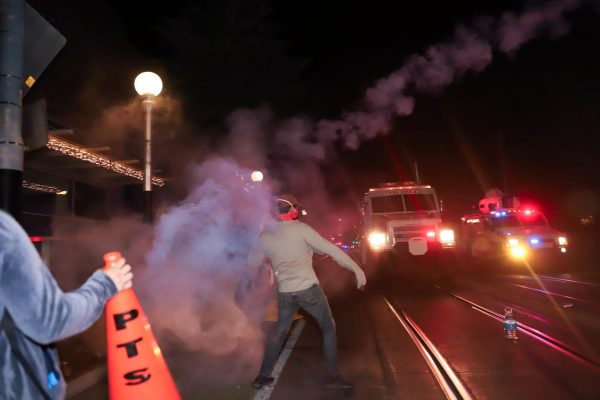A closer look at the University of Arizona’s safety failures in handling of campus shooting
University of Arizona President Dr. Robert C. Robbins and Father Emmanuel Taylor walking out to give a speech at the candlelight vigil honoring the life of Thomas Meixner on Oct. 7. The speech took place at Old Main on the University of Arizona Campus on the UA Mall.
March 29, 2023
Released Monday, March 27, the security report on the University of Arizona’s response to events before, during and after the on-campus killing of professor Thomas Meixner highlights four main areas of failure across multiple departments.
UA President Dr. Robert C. Robbins hired the PAX Group security consulting firm three weeks after the Oct. 5, 2022, shooting.
The PAX Group “supports leaders and organizations in navigating crises and conflicts with facts, authenticity, trust, and relationships,” according to its website.
In an Oct. 10, 2022, email to the university community, Robbins shared the report would be due to him in 75 days. It has been three months since that deadline has passed.
Robbins held a press conference the same day the report was released in the McKale Center media room on campus. There, he estimated the university paid the PAX Group around $250,000 to create the report.
As the report lays out, the main areas of failure the PAX Group found within the UA are: the Threat Assessment Management Team, University Crisis Response, the University of Arizona Police Department and Communications.
Along with analyzing each of these failures, the PAX Group offered recommendations on how to improve for the future, with 33 in total.
Threat Assessment Management Team
The Threat Assessment Management Team was found to not be running an effective TAMT in a way that is viewed as best practice for an organization of its size and scope.
The report stated that due to the inefficiency of the TAMT it led to multiple opportunities for the alleged shooter, Murad Dervish, to continue to “harass and threaten” University of Arizona community members.
The lack of an effective TAMT led to organizational stress of administrative entities such as the Dean of Students, Office of the General Counsel as well as the Department of Hydrology and Atmospheric Sciences.
The report called the stress on administrative functions, “a decentralized and fractured approach to managing the risk which limited coordination and communication.”
It was revealed that TAMT did not have a full-time leader, dedicated support or formalized meetings and reviews. The lack of each of these things are stated to have, “limited its effectiveness to fully assess, coordinate management, and implement a strategy (including advocacy) for protective orders, mental health or community interventions and the arrest(s) of the Subject.”
UAPD and DOS were both responsible for leading the TAMT together, but it was found that neither department was equipped to properly assess and manage threats alongside pre-existing departmental duties.
One of the recommendations offered to the TAMT was that there should be an established president of the TAMT allowing the team to “begin properly developing policies, processes, and guidelines.”
Alongside the establishment of senior leadership, the report recommended that the TAMT lead should meet with the president “at least annually and on an as-needed basis.”
University Crisis Response
Another area of failures found was in regards to how the university handles crises. The report blatantly stated that drills and training for emergencies are not prioritized by senior leadership and that Emergency Response Plans for each unit/department are encouraged but not mandated by senior leadership.
Emergency response fundamentals were found to be considered inconsistent across departments on campus, furthering the fractured responses to threats and harassment of UA community members.
The final thing that was found to be very inconsistent is the understanding of risk, or what is considered to be a threat, and what should be deemed “concerning”.
This lack of consistency across departments left them to manage things internally until situations reached a level of potential violation of the University Code of Conduct or threats of violence.
The report said, “without consistent, dedicated crisis response, the University is forced to move from crisis to crisis, which results in overwhelmed assessment and response teams and continued misunderstandings between involved parties.”
Four university initiatives came in the wake of the October shooting: Training for the Community, Counseling and Psych Services Crisis Response Team, Crisis Communications Plan and a Centralized Camera Policy.
Training for the community includes a request from President Robbins via email on Jan. 18 that the community reviews or participates in the active shooter training offered. CAPS proposed a crisis response plan for an Alternate Response Program to establish a designated trauma response and mental health crisis team.
The university’s Central Marketing and Communications team is in the process of proposing a “Crisis Communications” plan that they are planning to implement immediately.
Lastly, the university has started comparing policies from other PAC-12 universities to help establish a centralized security camera policy. By centralizing the security cameras on campus it allows all university units with security cameras to adhere to one institutional standard.
One recommendation handed down from the PAX Group regarding University Crisis Response is for CAPS to develop a, “six-month, strategic post-crisis plan from the CAPS and Life & Work Connections, Human Resources, and Marketing & Communications teams.”
University of Arizona Police Department
The PAX report outlined numerous flaws in law enforcement’s response to Dervish’s behavior before the shooting, finding that “there were multiple missed opportunities by UAPD to engage, disrupt, or arrest [Dervish] prior to the incident.”
The report identified multiple violations of the terms of Dervish’s expulsion that could have resulted in his arrest, including coming onto campus and messaging faculty members after being prohibited from doing so.
PAX reported that UAPD did attempt to arrest Dervish once in April, but failed to apprehend him because he refused to come out of his residence.
PAX also highlighted a clear disconnect between the Tucson Police Department and UAPD. Before the shooting, TPD received a tip from a handgun seller who refused to sell Dervish a handgun because Dervish informed him that he was going to use it to kill himself and others.
UAPD did not know that this interaction occurred until after the incident because TPD did not inform them.
In addition to UAPD and TPD failing to communicate, the Pima County Constables’ Office failed to serve Dervish with an order of protection filed by a HAS faculty member. The order of protection was filed after Dervish continually harassed multiple faculty members both over electronic communications and, on one occasion after the expulsion, in person.
In addition, PAX stated that the university community’s attitude towards law enforcement has changed along with “national dialogue regarding law enforcement,” and reiterated a 2021 report’s findings that identified “the need for a cohesive strategy for community and stakeholder engagement, and enhanced transparency.”
PAX did not explicitly refer to a catalyst in this attitude change, but paradigm shifts such as the Black Lives Matter movement were a significant catalyst in sparking “national dialogue” about law enforcement agents and procedures in recent years.
This has resulted in many Americans, especially historically discriminated-against groups, becoming wary of law enforcement on a national scale.
Overall, PAX suggested that the university must take steps to improve inter-agency cooperation between UAPD and local law enforcement in addition to increasing community outreach to repair community sentiment towards law enforcement.
Communications
The report identified flaws with both how the university communicates internally and with the community.
It states that a vacuum of information was created during “critical, early moments in managing the threat” because the “communications at the University [are] decentralized across all departments, including the President’s office and UAPD.”
PAX primarily discussed flaws in the UAlert system, stating that many students and staff members didn’t receive the alerts because of subscription errors. They noted that in the university’s email system, “mass emails are often identified as spam on the university’s server,” resulting in a “5-15 minute buffer or delay before the system could identify the mass UAlert email as not spam.”
While the UAlerts were delivered eventually, 5-15 minutes can be critical in an active shooter situation.
At Monday’s press conference, Robbins revealed that he was in Washington D.C. during the shooting, and did not receive a UAlert himself because of a problem with his subscription.
“I didn’t renew [the UAlert subscription] in a timely manner so I was eliminated from the list,” Robbins said.
The report also discussed a statement by the Chief of Police after the shooting, describing it as something “you can’t even predict,” and telling the community to “see something, say something,” and to “do something.”
This statement made it evident that the Chief of Police was not properly informed of the numerous complaints and requests for help by HAS and the student body, Dervish’s multiple violations of his expulsion, Dervish’s history of harassment at San Diego State University and Dervish’s failed attempt to purchase a handgun from the online vendor.
As the report stated, the statement “angered those who had been asking UAPD to arrest the Subject for nearly one year.”
The report called on the university to update the UAlert system, create a plan to centralize communications to maintain consistency during emergencies and develop pre-planned responses that can be quickly tailored to the specifics of a situation.
Additional comments from Robbins
Throughout the conference, Robbins noted that he holds himself personally responsible for the systemic failures that allowed for the continuous harassment by Dervish.
“I am angry at myself that I did not do more to prevent this tragedy,” Robbins said.
He informed the press that implementing the recommendations of the report will take time and cooperation from the entire community.
“There are gonna be many detailed and very difficult conversations that are going to need to be had in the coming weeks and months,” Robbins said.
Robbins ultimately acknowledged that there was a lot of work to be done, but that “together with our faculty, students, staff and campus security efforts, the University of Arizona is already safer than it was in October.”
Follow the Daily Wildcat on Twitter



